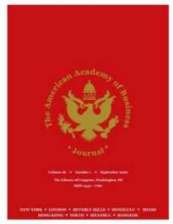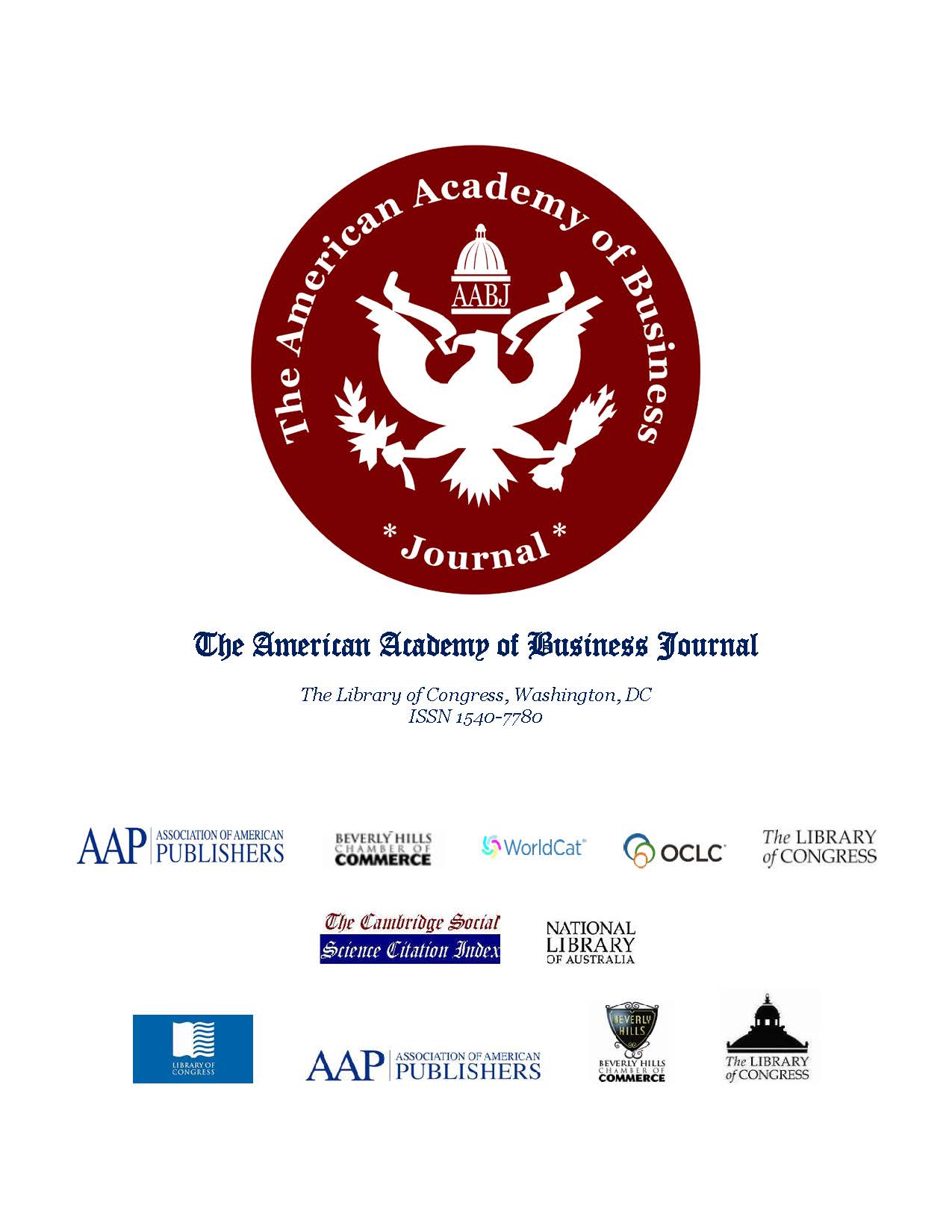|
Business/Accounting Course Design Preferences: Do Faculty and Students Agree?
Dr. Mark W. Rieman, Charleston Southern
University, SC
Dr. Daniel L. Tracy, University of South
Dakota, SD
Dr. John E. Knight, University of Tennessee
at Martin, TN
ABSTRACT
Every semester business each professor must
decide how each course is taught, often with little input from their students.
Many business faculty members feel that students have little knowledge of course
content or of teaching pedagogy. While students’ may have limited content
knowledge, students do know which teaching methods suit their learning styles
best. Students are key stakeholders in the educational process and have a
significant interest in their success within it. Students decide on a business
major to study and decide which specific courses they wish to take. These
decisions are often affected by students’ perceptions about specific teachers
and their teaching methods. Students also critique their professors’ teaching
performances through student teaching evaluations, with the results often
impacting professors’ merit pay, tenure, and promotion decisions. Fourteen
controllable course design features were ranked in importance by large samples
of business faculty and students. The analysis is intended to provide input for
business faculty with respect to course design factors that have the potential
to improve student satisfaction, while still balancing student and faculty
goals. The differences between accounting faculty and their students as well as
non-accounting faculty and their students are compared. When business faculty
members design courses for the semester, a plethora of issues must be
considered. Some of the more prominent issues might include their actual
business experience prior to their teaching careers, the topics with which they
are most familiar within their specific areas of teaching, different teaching
methodologies they have learned, and consideration of their own personalities
including both strengths and weaknesses. Some course design considerations can
be adjusted at the start of a semester without harming overall student learning
or causing any major disruptions in the way professors normally teach classes.
Other considerations are not so controllable. The individual professor’s
personality, including their sense of humor, is not something that can be
changed quickly.
Full Text
Cited
by:
An
Analysis of Corporate Social Responsibility (CSR) Across Firms, Industries, and
Regions
Dr. Gordon W. Arbogast, Jacksonville
University, FL
Julie Ankenbrand, Jacksonville University,
FL
ABSTRACT
According to
the United Nations Industrial Development Organization (UNIDO), Corporate Social
Responsibility (CSR) is a management concept whereby firms within their various
industries and regions integrate social and environmental concerns into their
business operations and interactions with their stakeholders. Increasing public
CSR visibility makes this integration more critical for companies to retain and
improve their corporate/brand images. CSR, which consists of environment,
social, and governance (ESG) focus areas, is coming more into the public
spotlight as consumers become increasingly aware of how companies influence ESG-
related activities. Companies that do not focus on improving their public
images are likely to experience negative financial impacts in the form of brand
degradation, decreased sales, and negative public perception. To address this
challenge, companies are becoming more focused on CSR and are allocating
increasing investment funds in this activity. An ever-growing base of socially
conscious consumers may perceive those companies that ignore or pay little
attention to CSR activity negatively. However, CSR is still a relatively new and
abstract topic and companies do not have formulas that assist in guiding their
CSR spending. This paper investigates what whether CSR varies across industrial
firms, industries and regions. In a first study, data from companies on the
2017 Fortune 500 Global List, along with their associated CSR spending, was
analyzed to determine if a relationship existed between the ratio of CSR
spending in a firm with respect to its industry, geographic region and company
size. In a second study, a random selection of 100 companies from the Fortune
500 was selected. Four four independent components of CSR were then employed:
(1) Community, (2) Employee, (3) Environment, and (4) Governance. A model then
regressed these four variables against individual Corporate Financial
Performance to determine if any of the variables had any significant influence
on a firm’s financial performance.
Full Text
Cited
by:
Do
Auditors Protect Shareholders Against Financial Expropriation by Corporate
Insiders?
Dr. Edward B. Douthett, Jr., George Mason
University, VA
ABSTRACT
We
investigate whether empirical evidence exists to indicate that auditors can
detect and deter shareholder expropriation by the parties in control of the
company’s resources at the time of an initial public offering (IPO). We conduct
our empirical tests on a sample of IPOs where regulators have explicitly
identified financial expropriations in the form of spinning shares on IPOs.
While a protectionist role against spinning is seemingly beyond the auditor’s
primary attest responsibilities, performing this role is consistent with the
auditor’s incentives of self-interest and avoidance of potential legal penalties
associated with a client’s inappropriate resource diversion. We find that
higher levels of IPO assurance services are associated with spinning suggesting
auditors may be able to detect spinning expropriations. We also find that audit
quality is not associated with spinning suggesting audit quality does not detect
or deter spinning expropriations. The results provide some evidence that
auditors can play a role in owner and investor protection. Our purpose is to
test for evidence that auditors play a role in detecting and deterring
opportunities for shareholder wealth expropriation. The expropriating cases
under study are “spinning” arrangements where the primary decision-maker, such
as the majority owner/entrepreneur or an influential agent, such as the
investment banker underwriting the IPO, allocates the IPO shares in a way that
expropriates the financial value of current shareholdings or the future value of
the outside investment. While minority, or non-controlling shareholders are
included as those being expropriated, the focus of our study is not specifically
on whether auditors can completely resolve expropriation problems between
minority shareholders and controlling agents, but rather whether auditors can
detect and deter shareholder expropriation of any kind. Detecting and deterring
expropriation is consistent with the incentives of self-interested auditors who
desire to build or avoid impairing their current reputation, a proposition
recently analyzed and developed in Newman, Patterson, and Smith (2005).
Full Text
Cited
by:
Leading Organizations by the Values
Journey Model of Adult Bio-Psycho-Social Behaviour
Dr. David A. Robinson,
Professor, Holmes Institute, Australia
ABSTRACT
Individuals and firms
are engaged in a journey that is navigated by their responses to problems of
existence. The journey typically follows a trajectory defined by three stages
and six value stations. Transitioning between value stations occurs naturally
but may be impeded by inertia or organizational pathologies. This article
defines the three stages and six value stations, explains how transitioning
occurs, what can go wrong, and the leadership challenges associated therewith.
A model of human values,
explaining psycho-social behavior among adults, originated with the work of Prof
Clare Graves of New York University in 1959. It was later promoted by Dr Don
Beck of Baylor University and Christopher Cowan under the title, Spiral Dynamics
and further developed by the current author, formerly of Rhodes University,
South Africa and subsequently professor in several universities in Australia and
Asia, currently at Holmes Institute, Australia. The essential principle of
the Values Journey is that life may be perceived as a journey of personal
development in which each individual develops their unique set of human values
along the way. The values, being the underlying motives that pattern behaviors
in response to given circumstances, are so formed by coping with challenges of
existence. Firstly, that we as humans attempt to develop in two directions
concurrently, along the X axis by increasing our capacity for rational and
considerate conduct, and up the Y axis by improving our capacity for autonomous
thought and action. Secondly, the journey is progressive, yet step-wise, i.e.
people advance alternately in the X or Y plain. Thirdly, each pair of stations
represent a ‘stage’ of development, thus there are three distinct stages,
portrayed here as pre-orderly, orderly, and post-orderly. The divide between
stage 1 and 2 is known as the ethical divide, a kind of discipline that must be
mastered to give purpose and to bring consistency and allow control (whether by
self- or externally-imposed). The divide separating stages 2 and 3 is known as
the holism divide as to cross it requires a world view that is more universal
and all-inclusive. Fourthly, the step-wise advancement through value stations
entails taking on board new paradigms of thinking, which may evoke a rejection
of previously-held values. Whilst it is possible to perceive a person’s current
values by observing their actions and behaviors, it must always be remembered
that personal values are not fixed, i.e. a current value station is not
necessarily a destination but may simply be a phase in the journey.
Full Text
Cited
by:
Corporate Governance in the wake of
the Royal Commission into Misconduct in the Banking, Superannuation and
Financial Services Industry in Australia: The Call for Reform
Carlo Soliman, LLM, CEO,
Soliform Property, Australia
Anurag Kanwar, LLM, The Institute of
International Studies, Deputy Covenor Admissions and Compliance Working Group,
IEAA, Australia
Gautam Dahima, CPA, Australia
ABSTRACT
The aftermath of
the Royal Commission into Misconduct in the Banking, Superannuation and
Financial Services Industry has cast a spectre of doubt over the efficacy of the
legal system to adequately cope with the regulatory challenges that emanated
from the high level of systemic misconduct observed. This paper will examine the
scope of the Royal Commission’s Inquiry and its recommendations in light of the
current legal framework and the consequences of any change. The implications of
the current protections are considered as well as the likely government
response. It is postulated that the present regulatory system provides effective
legislative protections. However, the problem lies with the investigative
willingness and enforcement inclination to implement the law in a consistent
manner. This in turn is best achieved through a multi-modal approach that
focuses on a stronger culture of compliance. Given the proliferation of
companies in Australia, any amendment to the law will have a profound impact on
all stakeholders in how corporations are monitored and audited in the future.
The genesis of the Corporation dates back to the reign of Elizabeth 1 (1) where
Crown Monopolies and Charter Companies emerged to undertake high risk
enterprises. Such ventures were legally separate from their investors and
managers in an effort to overcome risky commercial and speculative investments
and by spreading the risk, and, with it, the minimisation of failure. In the
English Westminster System, the notion of the separate legal entity, that
underpins the very existence of the Corporation, arose from the common law.
Cases such as Salomon v Salomon, (2) for example, oxygenate the idea that
a totally abstract entity could attain all the powers of a natural person and be
utilised to protect those managing its affairs. In modern times, whilst the
corporation remains relevant, its scope has changed. In fact there has emerged a
more sinister use which has seen this abstract device used to cloak fraud and
other forms of misconduct. This can have far reaching consequences, the most
notable being the Global Financial Crisis. Therefore, the importance of good
corporate governance cannot be underestimated because a well-regulated corporate
and financial services industry is essential for a stable economy. (3) Whilst
it is beyond the scope of this paper to provide a historical treatise on the
evolution of corporate law, some notable developments deserve mention as they
serve to contextualise the present regulatory and corporate governance climate.
Full Text
Cited
by:
Why is
the Value Estimated from the Constant Dividend Growth Model not an Equilibrium
Value?
Dr. Joseph Cheng, Pepperdine University, CA
Ellen Jiao, Lingnan University, Hong Kong
ABSTRACT
For dividend discount models, the intrinsic value of stock is estimated by
discounting all the future cash dividends of the stock. The Constant Dividend
Growth Model formula, also known as the Gordon Model, is expressed as P = D1 /
(k-g). (Gordon 1963). This classical formula is founded on the simple
assumption that the firm will pay future dividends that grow continually at a
constant rate forever. Such assumption renders the dividend discount model a
long-run equilibrium model. In this paper, we show that this formula to be
inconsistent with long run equilibrium in most cases. In the long run where
capital can be varied, firms will have the incentive to boost share value by
issuing shares if the return on equity ROE > required return k or to buy back
shares if ROE < k. Thus, capital level reaches the long run equilibrium state
only when the return on equity is equal to the required return (k = ROE). In
such case, the Constant Dividend Growth Model can be simplified even further to
: V = EPS1 / k. This newly derived valuation formula is based on only EPS and
required return, thus broadening its application to even stocks which pay no
dividends. In sum, this paper reveals the inconsistency of the Constant
Dividend Growth Model with long-run equilibrium that leads to mispricing and
proposes an alternative model for pricing stocks in long-run equilibrium, for
both dividend and non-dividend paying stocks. The Constant Dividend Growth Model
has been the classical model for valuing equity for many years. It is appealing
because of its simple application. The value of the stock is derived by
discounting future dividends which are assumed to grow at a constant rate
forever. All future dividends are discounted by the required return adjusted
for the time period. One drawback of this model is that it is only applicable
to firms which pay dividends. In this paper, we not only point out the
inconsistency of the Constant Growth Model, but also present a corrected version
of the Dividend Discount Model that can be applied to also firms which pay no
dividends. John Burr Williams proposed that asset price should be based on
estimates of the future income in The Theory of Investment Value (1938). He
elaborated on the concepts of discounted cash flow valuation, which is generally
regarded as the basis for the DDM. Franco Modigliani and Merton Miller proposed
the MM theorem in the Cost of Capital, Corporate Finance and the
Full Text
Cited
by: 1
|
 The
American Academy of Business Journal
The
American Academy of Business Journal

.gif)